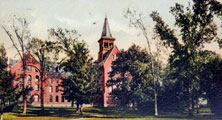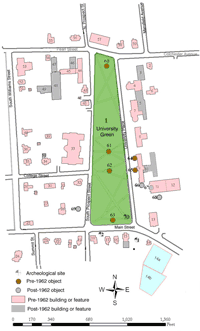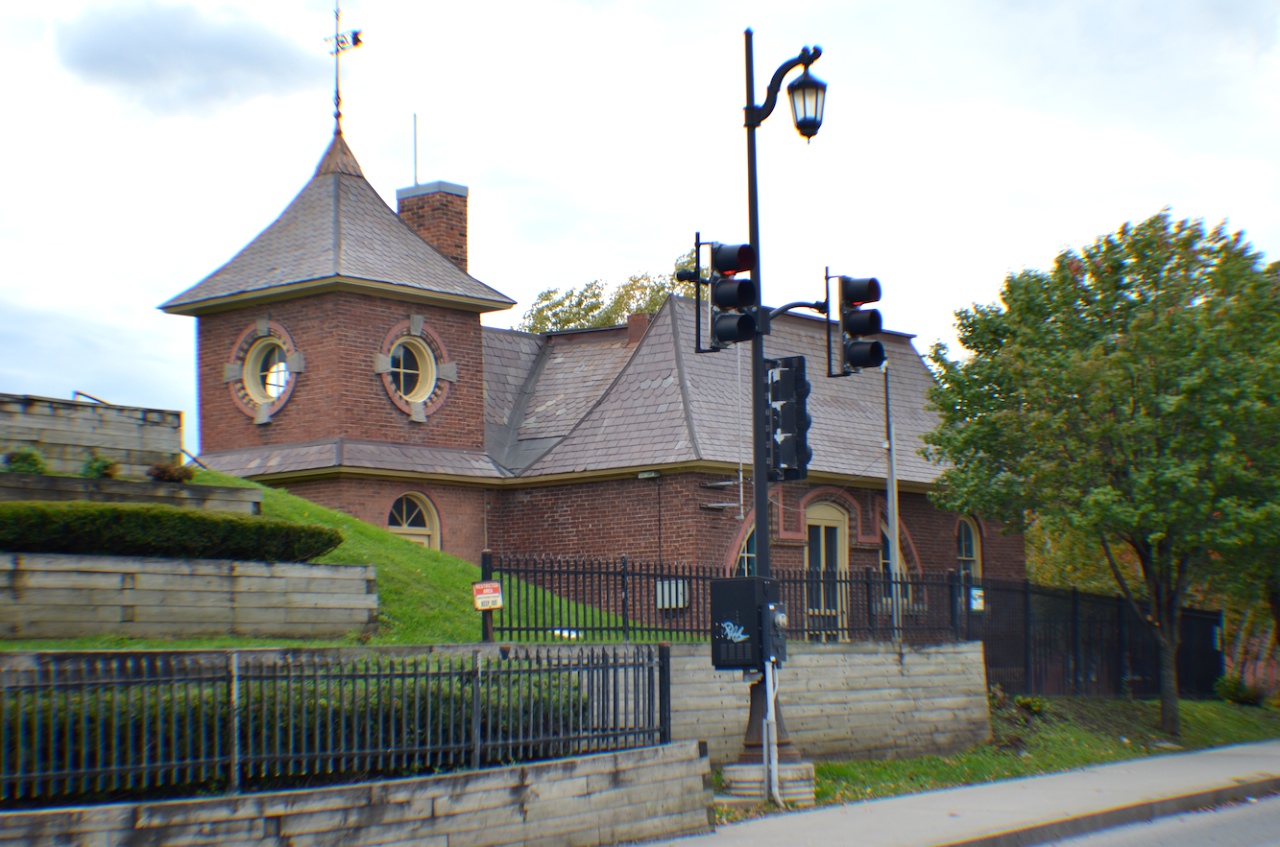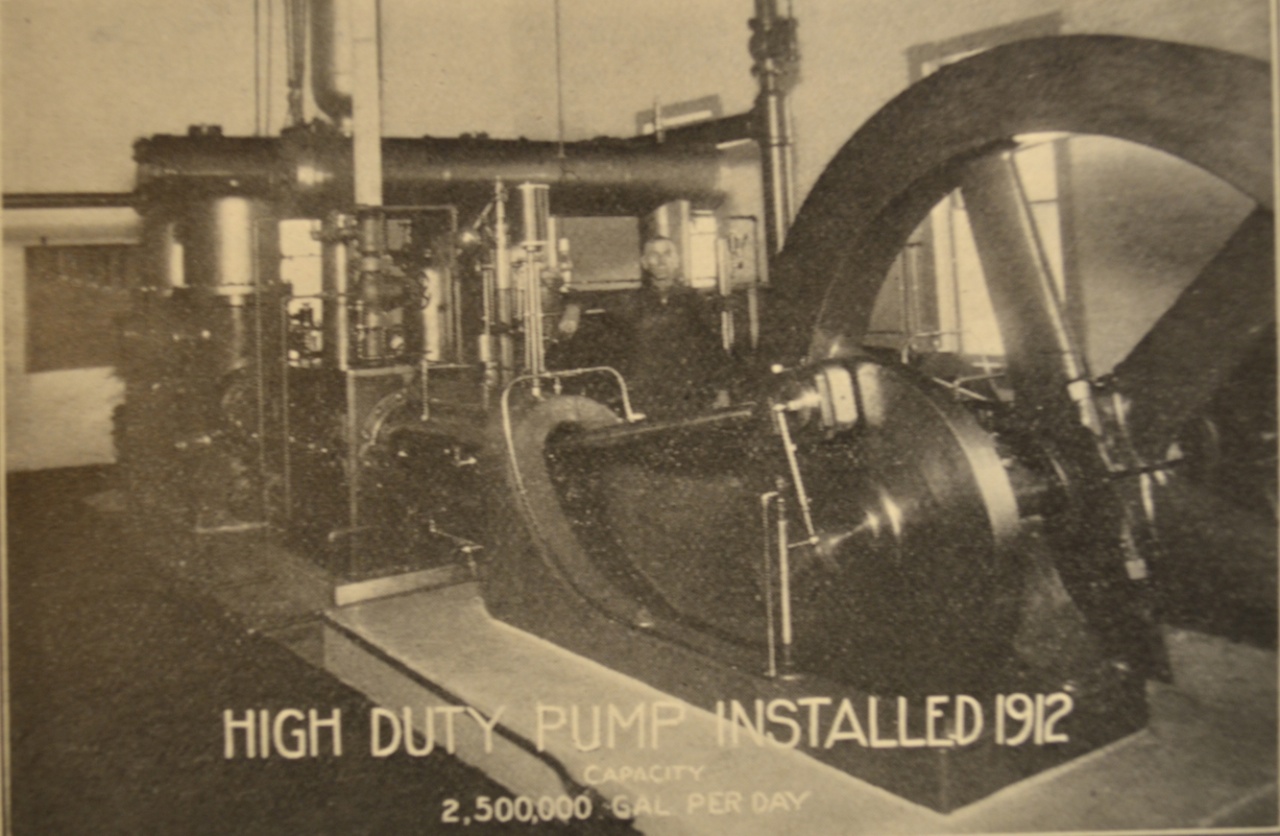 |
University Green Area Heritage StudyHistoric Burlington Research Project - HP 206Historic Preservation Program - University of Vermont |
Main Street Pump House and Burlington City Reservoirs
Main Street Pump House, photograph by Melissa Smith, (October 16, 2011) Burlington was incorporated in 1865.(1) Within that first year, the city health officer, Samuel W. Thayer, preformed a sanitary survey of the city and concluded in his 1866 report to the City of Burlington that there was a very pressing need for an ample supply of clean water.(2) Comparing water to the “life blood of a city” he described the current conditions of Burlington’s water supply in this way, “If we were to estimate the degree of vitality, possessed by the city of Burlington, by the quantity of water circulating through it, we should be found to consider it an almost bloodless, and very feeble city.”(3) Many community members relied on lake water, cisterns, and wells or collected roof water for their daily needs.(4) Water was also provided by the Burlington Aqueduct Company, which Thayer estimated supported approximately 4,000 people.(5) However, in light of seasonal draught, not even the Aqueduct Company could meet the demand for water in the city.(6) Thayer believed, even with their engine operating 24 hours a day, the water supplied by the Aqueduct Company could meet only half of the population’s urgent needs.(7) In response to this crisis, the City purchased the Burlington Aqueduct Company in October of 1866, but from the outset intended to begin planning a city water works project that would be able to better meet the needs of the entire community.(8) While arguments persisted about where the water should be obtained and how, the City ultimately decided to access water from Lake Champlain and deposit it in a reservoir next to UVM.(9) Construction of the Water Works began in 1867 and water was first pumped into the Reservoir on Christmas Day.(10) By February 1, 1868, the Reservoir and Gate House had been completed.(11) The Reservoir’s capacity was 2,236,000 gallons.(12) The Gate House, later renamed Pump House, was not initially a part of the building plan, but as the construction costs were below budget, the engineer felt that the incorporation of a more attractive building to house the pump machinery would add to the overall beauty of the Reservoir grounds.(13) It was suggested that walkways, trees, and fencing be added to the property so that it could be utilized by residents “…to enjoy the delightful prospect, the fresh pure air and the many pleasant surroundings…”(14) It was also suggested that such improvements would “…improve not only the taste, but the morals of the community.”(15)
F.W. Beers, Plan of the City of Burlington 1869, (Courtesy of Special Collections, UVM Library). This reservoir was approximately 800,000 gallons smaller than had been originally planned(16) and as a result a second reservoir was built to the south of the present reservoir with an estimated capacity of approximately 4,000,000 gallons and was completed in 1888.(17) This new reservoir had a concrete bottom and brick sides with the upper third paved with granite blocks.(18) In 1895, the needs of the community outstripped the operational capacity of the original pump and a second pump was installed to improve conditions.(19) Also in this year, a typhoid outbreak eventually convinced the mayor to adopt a rapid sand filtration system that was completed in 1908.(20) In 1910, the hypochlorite of lime treatment was adopted to further improve the quality and safety of Burlington’s water supply.(21)
Fourty-Seventh Annual Report of the Water Department of the City of Burlington, Vt. and of the Water Commissioners the Twenty Fifth, (Burlington: Free Press Pringtin Company, 1913). Later improvements included the incorporation of diesel motors in 1938 and new intake and filter systems in the late 1950s.(22) This filter system required the addition of a large ell to the Pump House.(23) A smaller ell was built for storage in 1960.(24) To further improve the safety of the city water supply, the reservoirs were eventually enclosed(25) and community access was restricted. Text by Melissa Smith, 2011 (1)Edward Tracy, “Burlington Water Quality and Treatment-Plant Operation” Journal of New England Water Works Association, June 1960, 116. |



